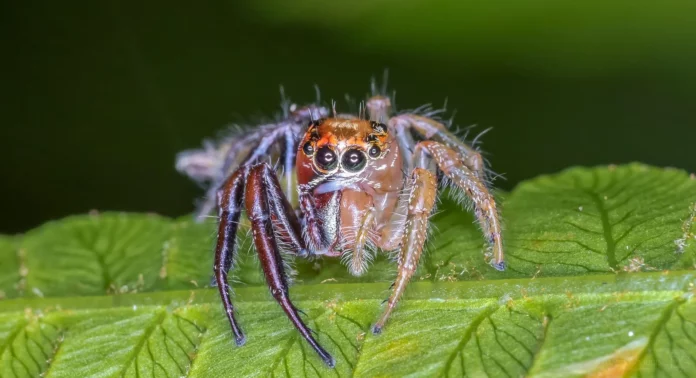Gynandromorph animals are animals that contain both male and female characteristics. In other words, those individual animals have both genetically male and female tissues which divide their bodies into different sides. You have probably come across some animals with one color on the right side while the left is with another color. That is an example of gynandromorph animals, and we will dig deeper into this matter today.
1Butterfly
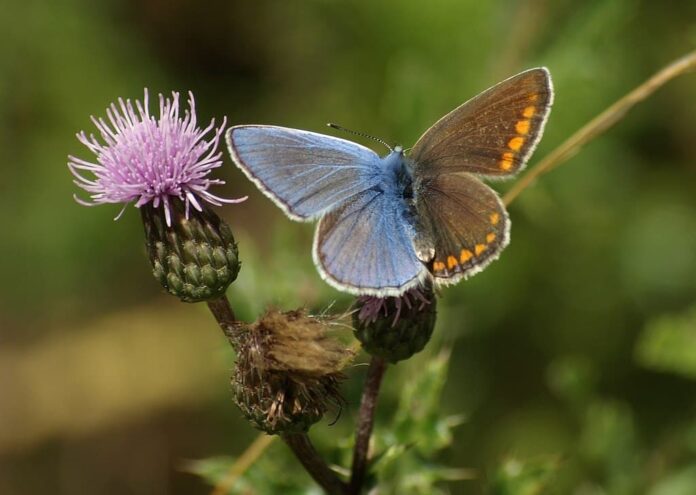
Butterflies are among the gynandromorph animals that people frequently and easily notice on their beautiful wings. Different butterfly species can differ in size and coloration, but gynandromorph butterflies are very easy to notice. Gynandromorph butterflies have the color and patterns of both male and female on each side, equally, which is so beautiful. Along with that, even the antennae and legs are different on either side as if two butterflies fused together.
The explanation for that is when two sperms enter a single egg. One sperm fuses with the egg cell’s nucleus and develops normally as a female. At the same time, the second sperm occurs in the cell’s fluid as a male. That means both a male and female grow in the same embryo which results in the gynandromorph butterflies.
2Cardinal
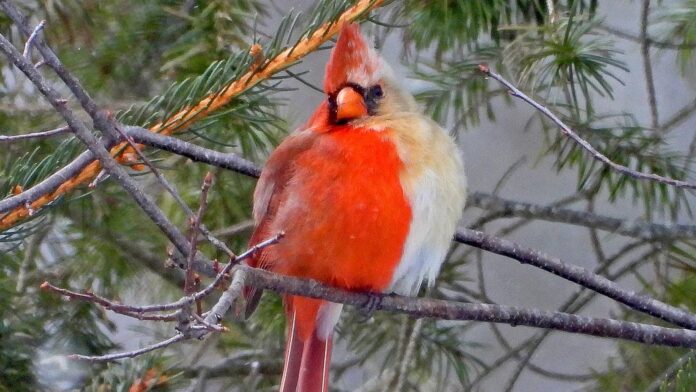
Male cardinals are red in color while female cardinals are tan. So a gynandromorph cardinal gives you the combination of both colors on each side of its body. Gynandromorph cardinals are very rare, and the first of them was seen in 2008 by a retired high school teacher. Some studies suggest that the gynandromorph cardinal’s brain could be half male and half female. Since male cardinals are capable of singing while females are not, this topic is still under debate. Also, most gynandromorph individuals are infertile so the chance of them having offspring is also a debatable matter.
3Chicken
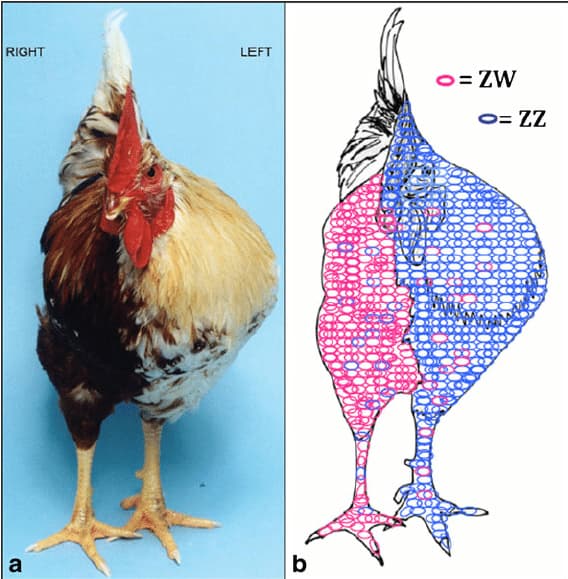
Another case of gynandromorph birds is chicken, but gynandromorph chicken is not as common as butterflies. The interesting thing about gynandromorph chicken is that half of them is a hen while another half is a cockerel. The cockerel part has a larger wattle, bigger breasts, and leg spur with different colors. In the case of gynandromorph chicken, it has a testicle on one side and an ovary on another side. There is another case where it had a strange hybrid organ that was part testicle and part ovary.
4Lobster
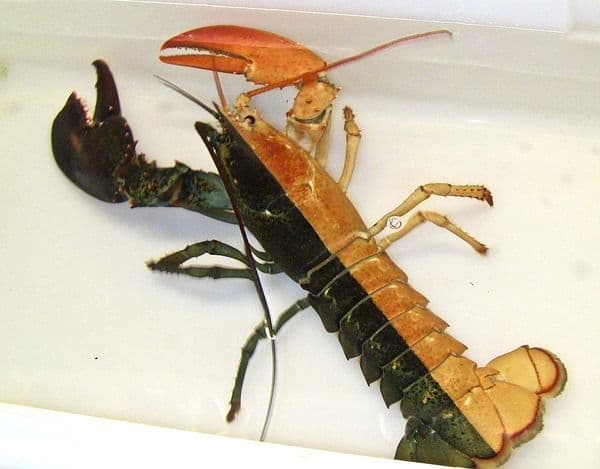
Gynandromorph is also very common in crustaceans, and lobsters are the perfect example of that. Gynandromorph lobsters come in different colors, and they are very expensive as well. Some of them come in half blue half black while some others come in half yellow half black. Apart from colors, the size of their claws is also different on each side as well. One claw is the sharp cutting type while another one on the other side is larger, blunter, and crushing type. In the case of gynandromorph lobsters, they are extremely rare they occur in about 1 in 30 million.
5Moth
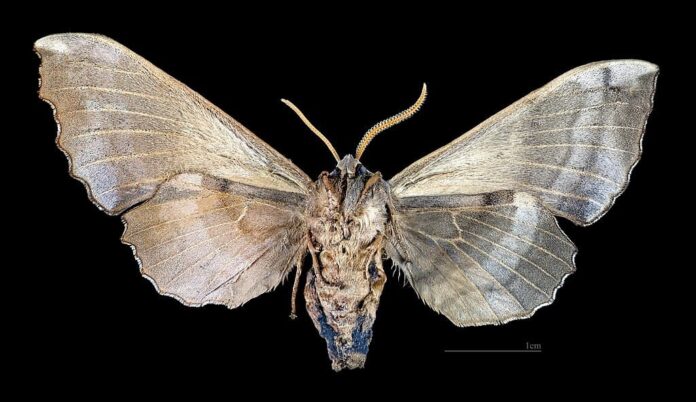
Just like butterflies, you can easily notice gynandromorph moths by the colors of their wings. Along with that, you can also notice a gynandromorph moth with the appearance of its antennae as well. The antennae of a male are feathery while that of a female is slender. A gynandromorph moth will give you both antennae with different colors on each wing. Some are even different in the size of wings which sparks interest among researchers about how they could fly.
6Phasmid
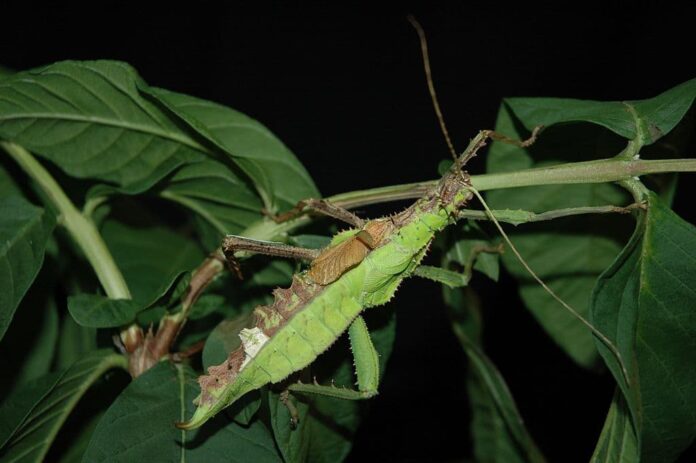
In the case of phasmid, the size and color of the male and female are varied just like in the cardinals. Females are bright lime green in color with large size while the males are mottled brown. The fascinating is the fact that the female phasmids are flightless while the males are able to fly. This gives you the question about their ability to fly, but the answer is quite obvious actually. You can see the wing on the male brown side, and that means gynandromorph phasmid cannot fly with one wing.
7Spider
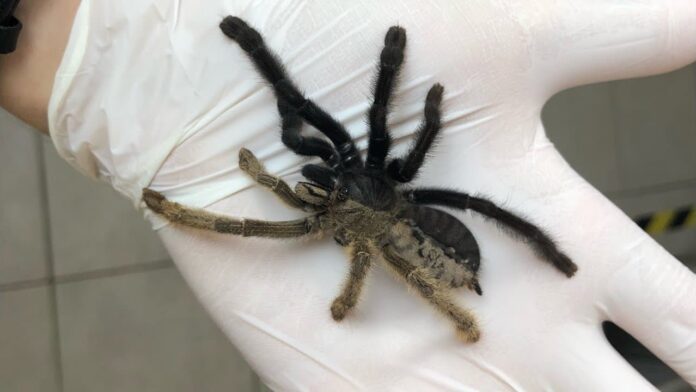
These creepy crawlies are already scary, let alone the combination of both male and female in one. Gynandromorph spiders are quite easy to notice, and you can tell right away if you come across one. On the male side, you will see the male palp, a larger chelicera, and longer legs. Meanwhile, the other side is the thick legs along with the color of the female arachnid. Some gynandromorph spiders have different colors on each side that indicates their sex which is easy to notice. I actually wonder if gynandromorph spiders mate, and if will they eat their partner after the mating. Feel free your share your thoughts, this could be a fun thing to discuss!
Related Post: Parthenogenesis Females That Don’t Need Males For Reproduction


